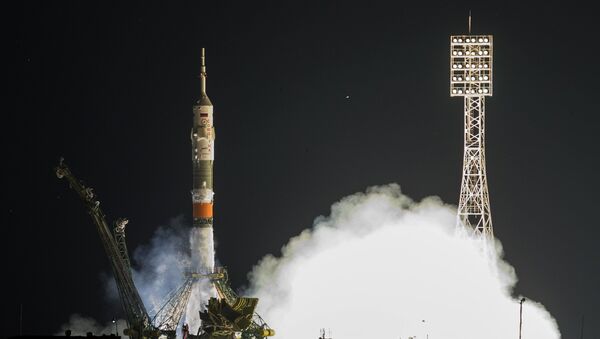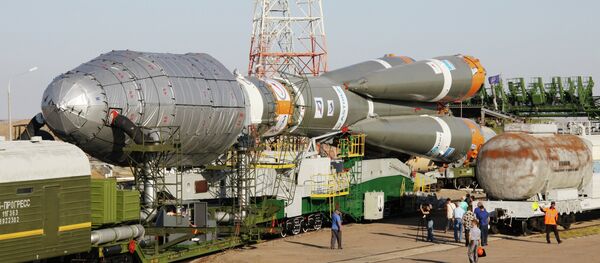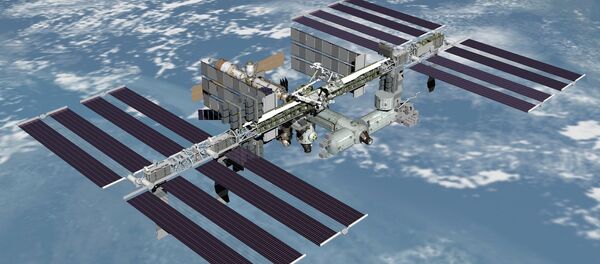MOSCOW (Sputnik) – The new carrier rocket will have a winged first stage that will be capable of returning back to the launch site after separating from the expendable second stage.
The project draft has been created as part of Russia’s 2016-2025 space program. According to Izestia, Russia could spend over 12 billion rubles (around $180 million) on the creation of the reusable first stage before 2025.
The newspaper cites space experts as saying that satellite launches could become much cheaper with the use of renewable launchers as they would allow to save millions of dollars on engines installed on the first stage of the rocket. The cost of the engines used on the current expendable launch vehicles is $10-70 million.
Carrier rockets of the Russian Soyuz family of expendable launch systems are the most frequently used in the world, according to the European Space Agency (ESA). Soyuz rockets are currently the only launch vehicle transporting people to the International Space Station (ISS).
The Proton-M is the largest carrier rocket in Russia's fleet of space launch vehicles. The rocket has lifted dozens of Russian-made and foreign satellites since it was first launched in 2001.






